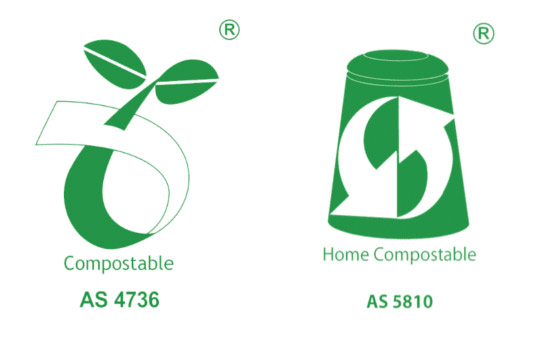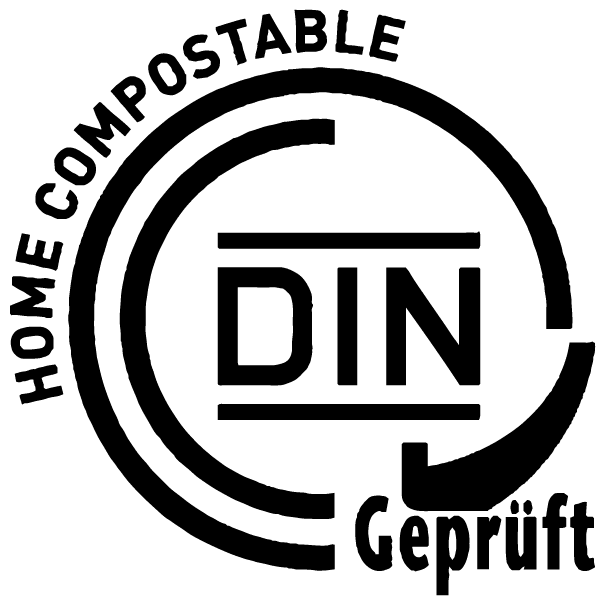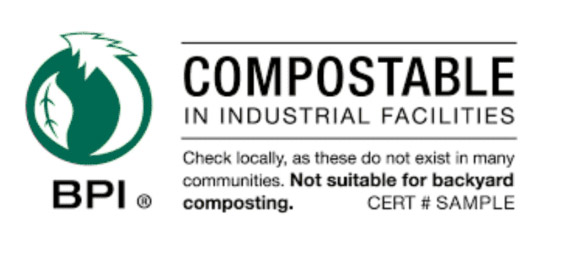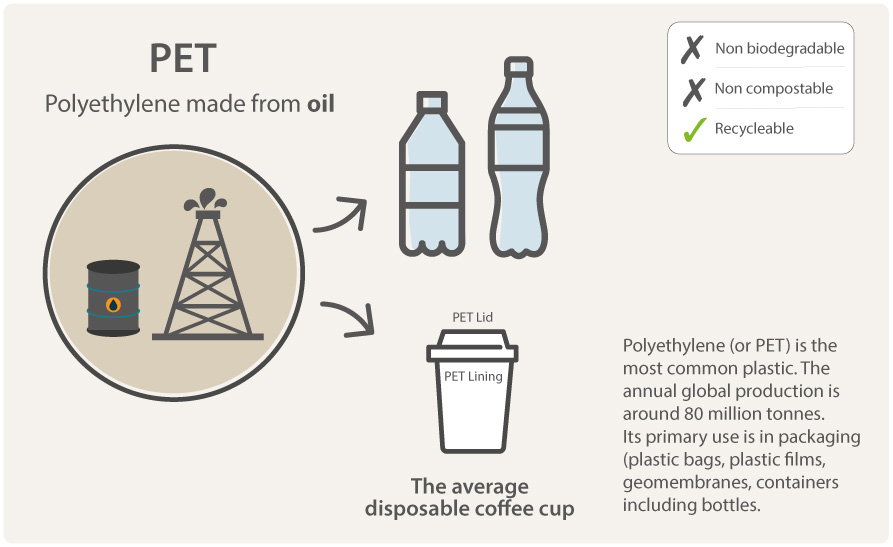How to compost your packaging in Australia
Composting your packaging
In Australia, compostable packaging is a new and growing industry, however there seems to be a lot of confusion about whether PLA coated packaging can be composted or recycled. And many claims in the media that no paper cups are recycled in Australia, is simply not true. ‘The bioplastic lining on PLA products dissolves during the repulping process and is easier to recycle compared to PE plastic coated cups’. This fact was recently verified by Planet Ark and The Australian Packaging Covenant. Some recyclers say they will not accept paper cups as they are unable to separate the plastic from the paper fibres, yet these very same companies accept paper milk and juice cartons which are made from the same components as coffee cups—plastic coated paper board.
Additionally, some Councils in Australia are taking certified Home Compostable packaging in the green waste collection*. (*Please check below to see if your local Council to see if this is the case in your area).
What’s PLA?
What’s PLA? Everything you need to know about Polylactic-acid (a cornstarch derivative).
So, where can I compost or recycle my packaging after use?
Did you know 25% of Councils in Australia now include pickup of compostable packaging in your (FOGO) green waste bin?
If you live in South Australia and Tasmania, you are ahead of the game! We hope to see other councils follow this trend in coming months and years.
Click the button below and to find out if your council is providing this service.
Which logos should I look for on my packaging and what do they mean?
If your packaging bears a composting logo from another country (such as the European Union’s compostable logo or the Biodegradable Products Institute (BPI) logo from the United States), it indicates that the product meets compostability standards in that particular region. However, it does not automatically mean that it meets Australian compostability standards.
Australian logos
Home composting
The Home Compostable Verification logo clearly identifies and differentiates packaging materials as biodegradable and compostable in Australia and New Zealand only. To be certified compostable and carry the Home Compostable Verification logo, suitable biopolymer materials must undergo a stringent test regime outlined by AS 5810-2010 and carried out by recognised independent accredited laboratories to the Australian Standard AS 5810-2010. The Home Compostable Verification logo is a symbol that the product’s claims of biodegradability and compostability as per AS 5810-2010 has been verified.
Commercial composting
The seedling logo clearly identifies and differentiates packaging materials as biodegradable and compostable. To be certified compostable and carry the seedling logo, suitable biopolymer materials must undergo a stringent test regime outlined by AS4736 and carried out by recognised independent accredited laboratories to the AS4736 standard. The seedling logo is a symbol that the product’s claims of biodegradability and compostability as per AS4736 has been verified.

European logos
The “OK to Compost” logo is a certification mark used to indicate that a product is certified compostable according to specific standards. This logo is typically found on products such as compostable bags, food containers, and utensils.
Here’s what the logo signifies and how it relates to certification:
Certification Standards: Products bearing the “OK to Compost” logo have undergone testing and meet the standards set by certifying bodies. These standards ensure that the product will break down in composting conditions into non-toxic components and contribute to the production of compost.
Compostability: To qualify for the logo, products must meet specific criteria regarding biodegradation, disintegration, and absence of harmful residues in the resulting compost. This ensures that the compost produced is safe for the environment and suitable for use in agriculture.
Logo Usage: Manufacturers and distributors use the logo to communicate to consumers and composting facilities that their products are compostable and can be included in composting processes without adverse effects.
Certifying Bodies: Different certifying bodies may use variations of the “OK to Compost” logo, but they all indicate compliance with rigorous compostability standards. Examples of certifying bodies include the Biodegradable Products Institute (BPI) in the United States and DIN CERTCO in Europe.
In summary, seeing the “OK to Compost” logo on a product provides assurance that it meets specific compostability standards, ensuring that it can be safely composted and will contribute positively to environmental sustainability efforts.


USA logos
In the United States, the compostable logo commonly used is the “BPI Certified Compostable” logo. Here’s what it signifies and how it relates to certification:
Certification by BPI: The Biodegradable Products Institute (BPI) is a non-profit organization that certifies products as compostable according to rigorous standards. Products that meet these standards can display the BPI Certified Compostable logo.
Compostability Standards: To qualify for certification, products must demonstrate that they will biodegrade in a composting environment under specific conditions. This includes breaking down into carbon dioxide, water, inorganic compounds, and biomass at a rate consistent with known compostable materials.
Testing and Verification: BPI conducts testing on products to ensure they meet these standards. This testing includes both laboratory tests and field trials to assess biodegradability, disintegration, and absence of toxic residues in the resulting compost.
Logo Usage: Manufacturers and distributors use the BPI Certified Compostable logo on their products and packaging to indicate that they have been independently certified as compostable by BPI.
Consumer Assurance: For consumers, seeing the BPI Certified Compostable logo provides assurance that the product is suitable for composting. It signifies that the product will break down in a composting facility into non-toxic components, supporting the production of nutrient-rich compost.
Overall, the BPI Certified Compostable logo serves as a reliable indicator that a product meets recognized compostability standards in the United States, helping consumers make informed choices about sustainable disposal options.

Composting Cellophane Bags
Both NatureFlex™ and Standard Cellophane bags can be composted at home. We tried it ourselves and you can already see the results after only two weeks in a backyard compost!
NatureFlex™ Bags
NatureFlex™ is a home compostable film originally developed by Futamura Group, Japan. Our NatureFlex™ bags are made in Australia from renewable cellulose fibre. They are certified home compostable by Australian Standards AS 5810. These bags have good moisture barrier for foods, and are heat sealable with a standard heat sealer. Can store food for up to 18 months under dry conditions without breaking down. Decomposition time approximately 15 weeks once in the elements.
Standard Cellophane Bags
Industrially compostable. Made in Australia from renewable cellulose film with synthetic moisture barrier. Can store food for up to 2 years under dry conditions. Can be heat sealed using standard heat sealer. Great for teas, cookies, biscuits. Standard thickness 23NK. Can be used in the freezer for food storage at -18 degrees. Biodegradable, but best suited to industrial composting facilities after use. Can be composted at home, however ideally composted in an industrial facility.

Decomposition of a NatureFlex™ Cellophane Bag & Standard Cellophane Bag after only two weeks in a backyard compost.
What are bioplastics?
Bioplastics
Bioplastics such as PLA (poly-lactic-acid) and PSM (plant-starch-material) are plastics derived from renewable biomass sources, such as vegetable fats and oils, corn starch, or microbiota. Bioplastics are usually derived from sugar derivatives, including starch, cellulose, and lactic acid. These can be used in the same way as conventional plastics, but are biodegradable and will break down under favourable conditions. Products made with bio-plastics produce less carbon emissions than those made with conventional plastics.
Conventional plastics
Such as PET are made from fossil-fuel plastics (also called petro-based polymers), and are derived from petroleum or natural gas. Production of such plastics tends to require more fossil fuels and to produce more greenhouse gases than the production of bio-based polymers (bioplastics). Petroleum based plastics take many decades to decompose, and as they break down, break up into smaller and smaller particles, getting into our waterways, are ingested by marine life, plants, and can enter our bodies via the food chain.
Please consider the environment before buying any single-use packaging.




